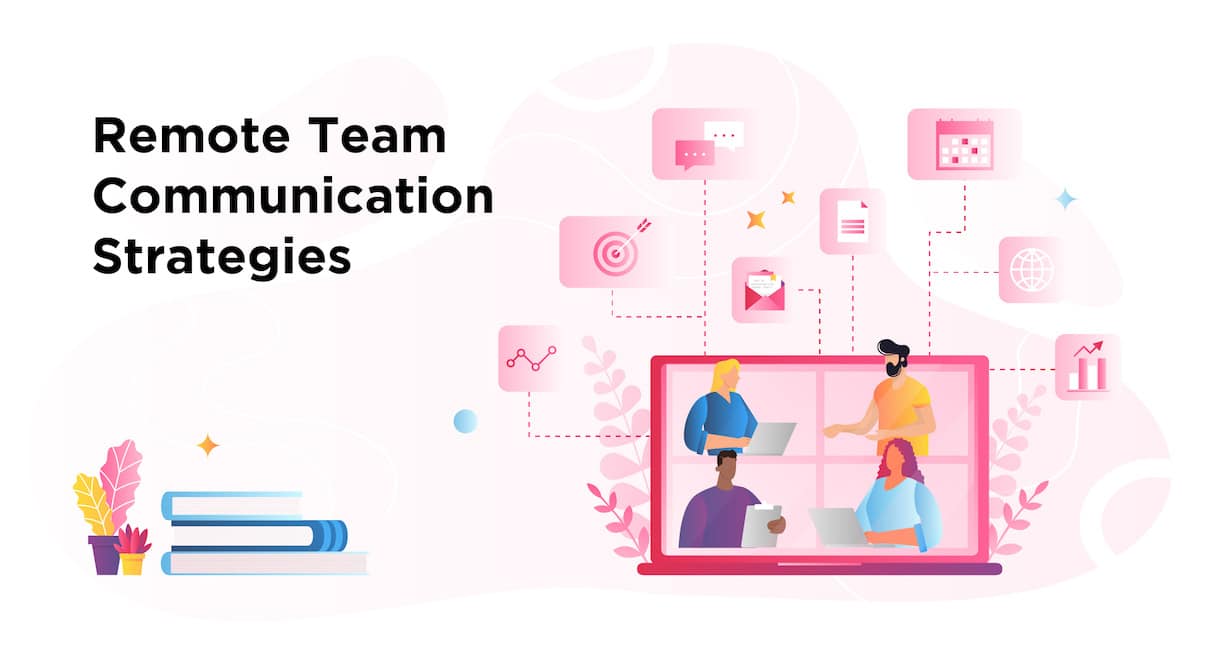Frontline workers fill some of the most urgent and demanding jobs in modern society. Yet many employers still overlook frontline employee engagement in their organization. Here’s how to fix this.
Compared to their office-bound colleagues, frontline workers rarely receive the same attention and dedication to ensuring their engagement and happiness.
Overlooking frontline employee engagement has far-reaching consequences. This post looks at how you can improve frontline employee engagement and prevent the impacts of a disengaged workforce.
Take a self-guided tour of ContactMonkey
See how our key features can streamline your internal communications.
Take product tour

Who Are Frontline Employees?
Frontline workers are those who provide direct, on-site services for clients or employers. They include emergency responders, teachers, retail staff, nurses, and bus drivers, to name a few.
More often than not, frontline employees have to show up to work physically. They focus on hands-on tasks, such as patient care (see our blog on employee engagement for hospitals and healthcare), transportation, construction, and food delivery.
Put simply, frontline employees are the people who make the world go round and improve the quality of life for millions of people.
What Is Frontline Employee Engagement?
Frontline employee engagement is about fostering connections between frontline workers and the rest of an organization.
Engaged frontline workers feel informed about company news and events, have strong relationships with colleagues across different teams, and feel included in the organizational culture.
To engage frontline workers, your company needs strong leadership that motivates and inspires employees, an inclusive culture, and quality employee engagement tools to connect staff from anywhere.
Why Is Frontline Employee Engagement Important?
The frontline workforce is the thread connecting brands with end-users. As frontline employees form the backbone of most organizations, the benefits of frontline employee engagement extend to countless areas of business.
In fact, for companies that are unsuccessful in engaging frontline workers, the cost of employee disengagement adds up to 34% of an employee’s yearly salary.
Here are a few of the key benefits of frontline employee engagement:
- Higher employee retention and reduced turnover of valuable workers.
- Improved customer service.
- Less employee absenteeism.
- Improved employee experience and greater brand advocacy.
- Increased employee motivation and productivity.
- Higher business profits by up to 15%.
Start two-way conversations and employee feedback loops
Learn how to engage staff with pulse surveys, content ratings and reactions, custom polls, and more. Ready to send modern emails?
See engagement features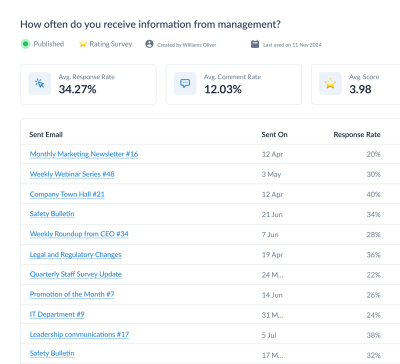
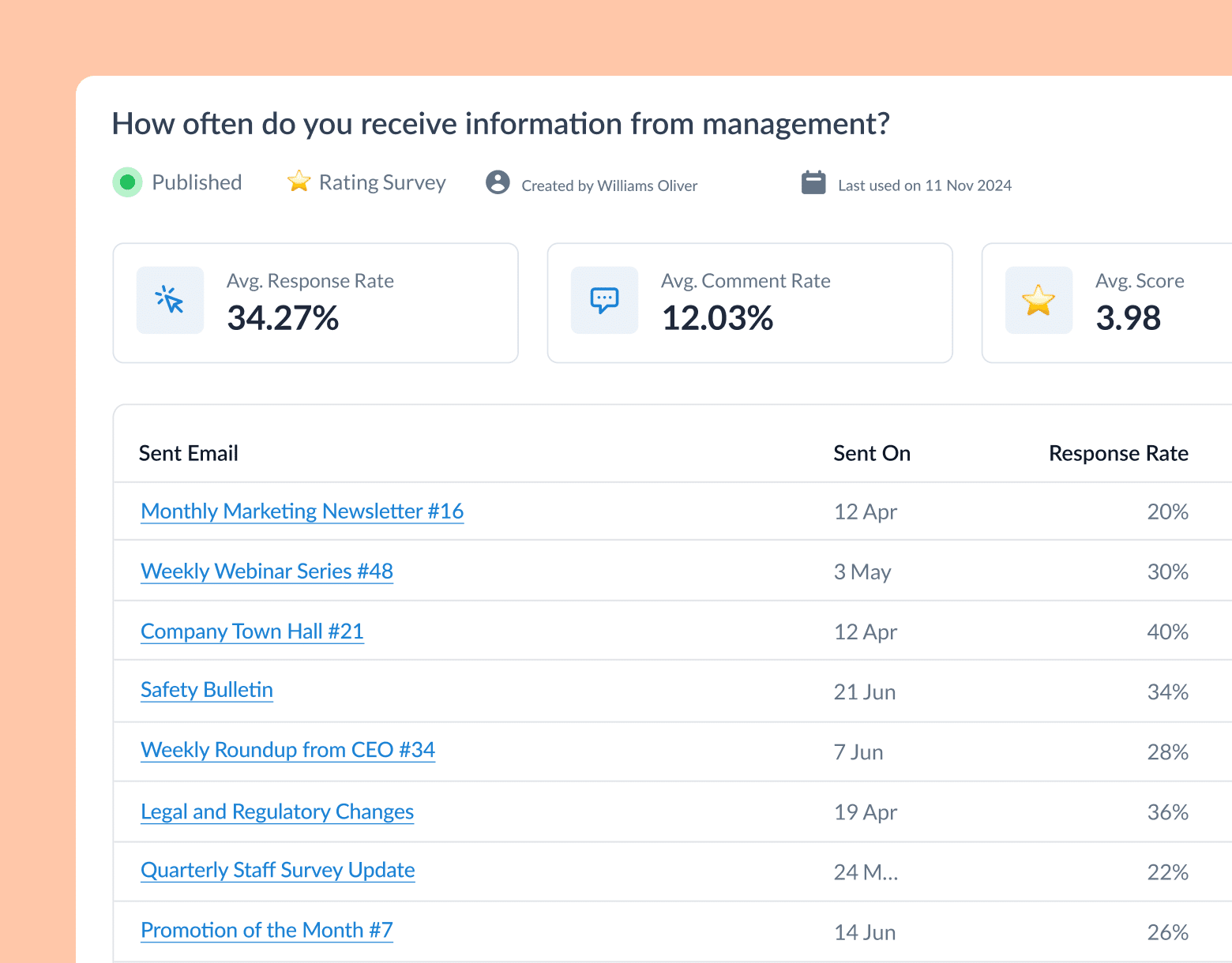
What Are the Challenges of Keeping Frontline Workers Engaged?
It’s hard to deny that engaging frontline employees is difficult. The obvious challenge is of course distance. Frontline workers are often physically separated from the rest of the workforce.
Not to mention, when it comes to doctors, nurses, or construction staff, there often isn’t much time left at the end of their workday for meaningful engagement.
Participating in corporate initiatives or events also doesn’t come easy for food delivery personnel, logistics staff, and truck drivers who work odd hours and often feel exhausted.
Here are a few other employee engagement statistics that underscore the challenges of engaging frontline employees:
- 1/5 of HR and internal comms professionals prioritize office employee engagement and communications. Meanwhile, only 12% prioritized deskless worker engagement.
- More than 40% of companies are concerned that frontline workers lack the technical skills to make use of digital tools that support effective communication and engagement.
- 69% of frontline employees believe that their work stress will remain the same or increase in the near future.
The challenges to frontline employee engagement can be summarized as:
- Distance from the rest of the team.
- Lack of empowerment from upper management.
- Low employee morale as a result of stressful work conditions.
- Long days, burnout, and exhaustion.
Unlock Internal Comms Superpowers
Discover why 10,000+ rely on us. See the internal email and employee newsletter platform in action.
Book demo

10+ Ways to Improve Frontline Employee Engagement
While there are some notable challenges to frontline employee engagement, it’s not worth laying down your arms just yet. Below, we break down 11 ways you can create a superior frontline employee experience and increase engagement across your frontline workforce.
1. Use quality digital tools to improve information access
Employees who feel well-informed in their organization are much more engaged and become the company’s biggest ambassadors. Meanwhile, uninformed employees have the opposite effect.
While your frontline staff is often far from a computer, they still need to have access to key company information wherever they are. With internal communications digital transformation, it’s never been easier to tap into the power of technology to engage frontline teams.
Leveraging employee apps and the latest frontline employee software, such as employee SMS, is the best way to step up workplace engagement.
ContactMonkey’s internal SMS software helps you ensure that employees never miss an update—wherever they may be. Internal communicators can send appointment reminders, emergency SMS alerts, and other frontline employee communications from the same place where they create corporate emails.
Not all employees need to receive information sent to frontline employees. To reduce the amount of frontline emails sent to non-frontline employees, use custom email lists to organize your internal communications.
Using ContactMonkey’s List Management feature, you can create custom email lists without needing help or permission from IT. Email lists created with ContactMonkey integrate with your Human Resource Information System (HRIS) like Workday and ADP, as well as Azure Active Directory, so they’ll automatically update as employees join and leave your organization.
2. Focus on company culture/employee experience
Company culture shapes the climate of your organization. It’s how people feel inside your company, how they perceive it, and how they interact with it on a broader basis.
Positive and inclusive company culture helps employees feel confident playing an active role in the company. They’re more likely to ask questions, volunteer across different initiatives, and contribute ideas to stimulate innovation.
Creating a strong, inclusive, and cohesive company culture means establishing hiring practices that bring in employees who are team players. It also means fostering workplace diversity and inclusion, encouraging employees to speak up, and asking for upward feedback.
Most of all, it means leveraging your internal communications to convey the language, tone, and ethos of your company culture—whether it be through visuals and graphics or thoughtful messages.
Modern internal comms and measurement tools
No design or technical expertise needed. Save time, increase engagement, and dazzle your employees with fun and interactive communications.
Explore all features

3. Leadership
The latest research suggests that effective leadership is one of the biggest drivers of employee engagement. Make your leadership communications more transparent and authentic by using language and formats that resonate with employees.
Drop the jargon and get real with video messages or engaging graphics. Learn how to send personalized emails to make your communications sound more human and authentic. With ContactMonkey’s merge tags, you can add employee names directly into email subject lines and body copy.
Most importantly, don’t forget to track internal email analytics to see the performance of your leadership messages and understand what resonates with employees.
Does your organization have internal or external regulations around email privacy? Using ContactMonkey’s anonymous email tracking, you can gather email metrics while protecting your employees’ privacy.
4. Frontline employee appreciation
The link between frontline employee engagement and recognition is undeniable. When employees feel appreciated, it boosts their confidence in their work and empowers them professionally and personally.
When hard work is recognized, it lets employees know that they’re headed in the right direction and that their efforts are valued.
There are countless employee recognition ideas you can try out—from virtual thank you feeds to employee gift cards and paid vacations. No matter what your internal communications budget is, there’s always a way to show gratitude to your staff.
Check out our list of employee recognition ideas for more inspiration.
5. Employee empowerment
Employees who are well-informed feel more empowered in their jobs and more engaged as a result. When there’s a lack of information—whether it has to do with resolving customer complaints or completing benefits enrollment—employees feel lost and confused.
In turn, frontline workers lose confidence in their roles and disengagement soon follows.
Try creating a monthly frontline employee newsletter that contains information tailored to frontline staff. Or use an email template to create a special section in your corporate newsletter dedicated to frontline employee updates.
Whatever route you take, make information easy to access, and don’t forget to create customized content for frontline staff.
6. Frontline employee training and professional development
Seeing growth opportunities at your place of work is a major boost in employee morale and engagement. When frontline workers in the service industry see opportunities for professional and personal development, they’re much more likely to stick around for the long run.
Conduct polls and employee surveys to see what frontline worker training, employee coaching, employee communication conferences, and mentorship opportunities staff would be interested in.
You should also promote existing initiatives in your employee newsletter. With ContactMonkey, you can embed pulse surveys directly into Outlook and Gmail newsletters using the drag-and-drop HTML email builder.
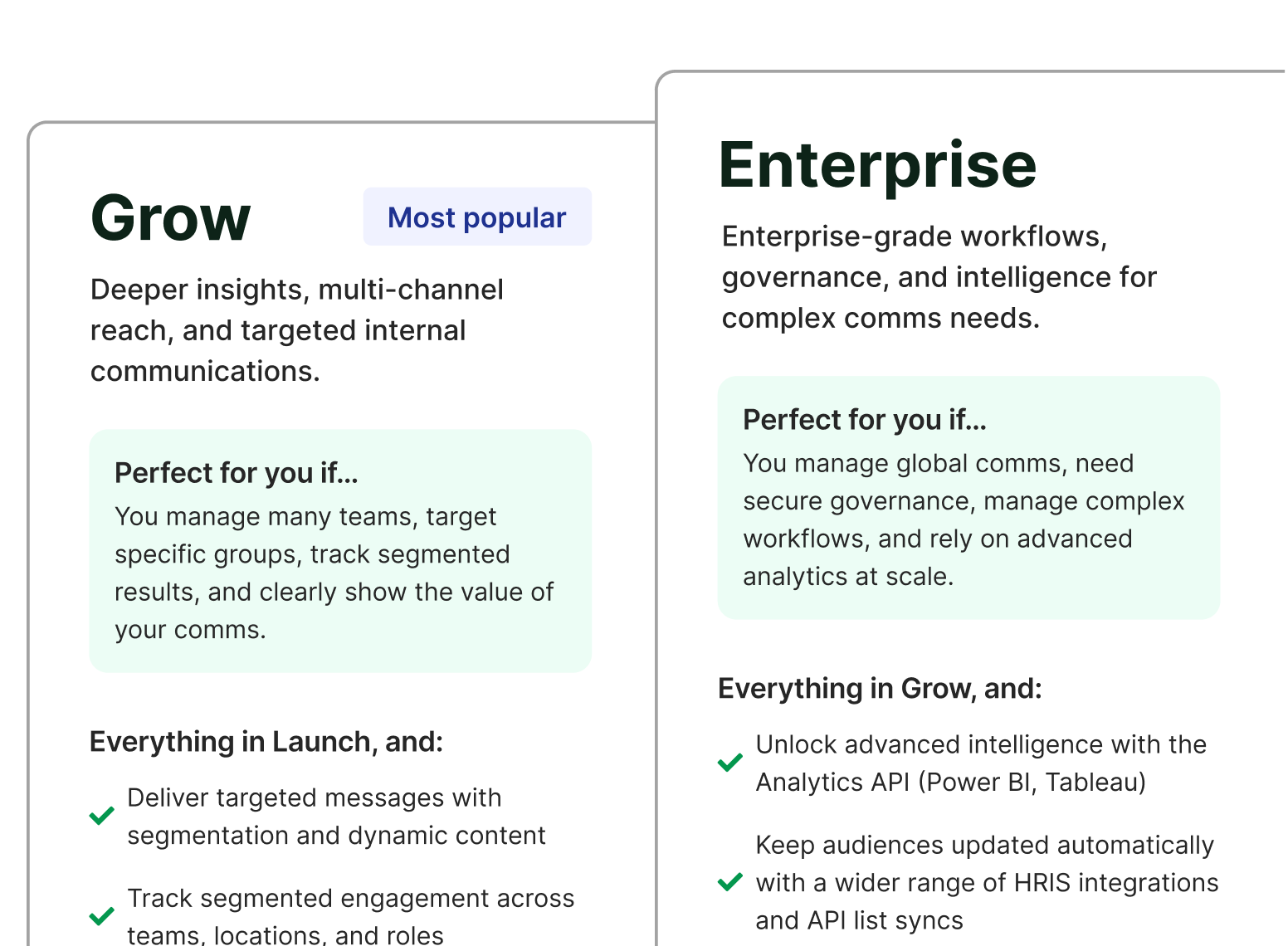
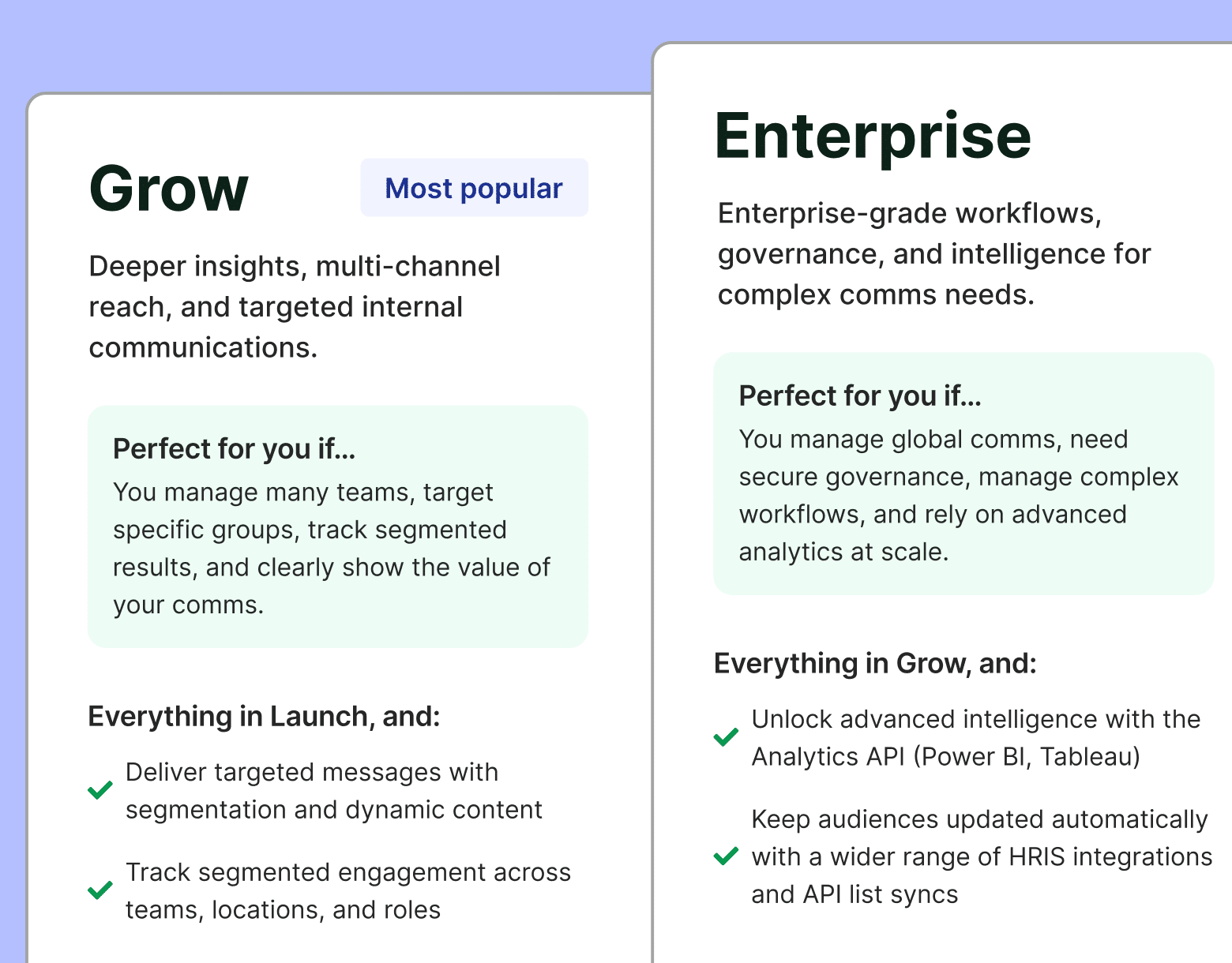
7. Collect employee feedback
The easiest way to learn what engages your frontline workers is to ask them directly. Collect employee feedback from your frontline staff through pulse surveys.
With ContactMonkey, you can check employee sentiment around compensation and benefits, work-life balance, and other areas of work in minutes.
With both quantitative and qualitative response options, ContactMonkey lets you ask open-ended employee engagement survey questions or conduct multiple-choice employee motivation questionnaires straight from your internal emails.
Not sure what questions to ask your employees? Using ContactMonkey’s OpenAI ChatGPT integration, you can write a prompt describing what information you’d like to learn. Then simply select the questions that best fit your needs and edit them for your audience.
8. Act on employee feedback
Frontline employee feedback is only as valuable as the steps you take to act on it. When employees submit their pulse survey or eNPS survey results (employee net promoter score), take a deep dive into the data and truly examine patterns, common themes, and anomalies.
For instance, if employees are consistently rating work-life balance at your company 2 stars, this is an area you want to pay attention to.
Before you even begin brainstorming solutions, thank employees for their time and be transparent about the problems/opportunities at hand. Afterwards, you can tell employees that you’re working on finding solutions and get their advice on how to improve things.
When you show that feedback is valued, employees become more open to sharing consistently. This in turn will help you develop more meaningful employee engagement solutions.
9. Implement an excellent onboarding process
When you give frontline employee onboarding the attention it deserves, you’ll see more engaged frontline workers, a stronger company culture, and increased retention.
Your onboarding process is how your employee first learns about their role in your company. It’s also how they’ll learn about their colleagues and support systems.
Great onboarding must involve clear communications, opportunities for feedback, questions, and dialogue, as well as virtual team-building.
An interactive HTML newsletter lets you incorporate multiple elements and visuals into your onboarding email. Not to mention, you can add videos, feedback options, and questions/comment comments.
With great employee onboarding communications, you can alleviate anxieties and leave more room for employee engagement.
Organize your contacts with list management
Save time managing employee lists by syncing everything in one place.
Learn more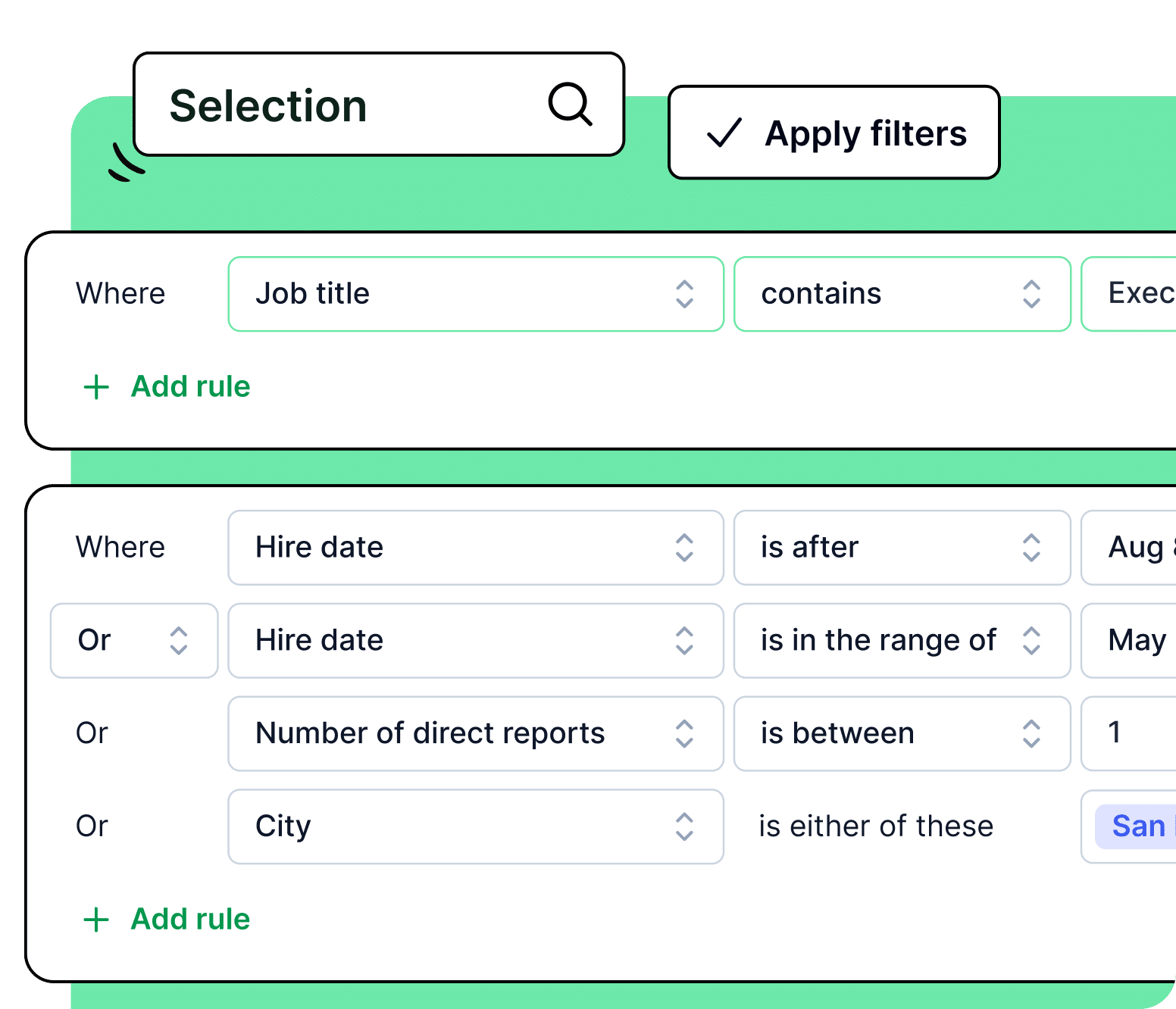
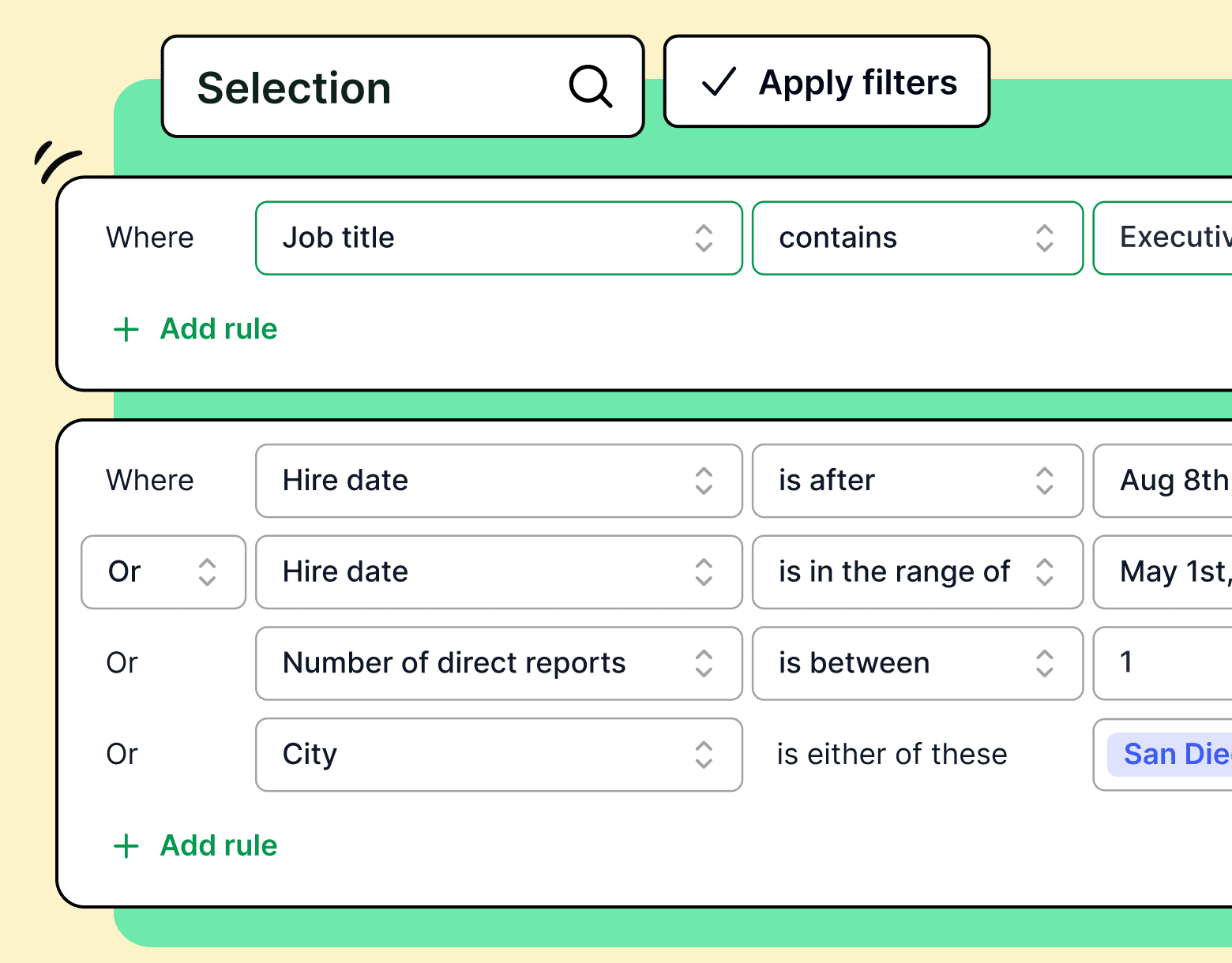
10. Invest in great employee events
Never underestimate the power of a few well-organized company events. Yes, employees are busy and will not attend dozens of gatherings year-round. But they will show up to a massively anticipated event with great food, great entertainment, and networking opportunities.
A quality team-building event lets employees see colleagues that they may never usually interact with and engage with them outside a work environment.
Great events, even if they happen just once or twice a year, are incredible opportunities for building strong, lasting relationships with colleagues.
With the latest technology, great events no longer require everyone to be in the same place at the same time. So frontline employees have more opportunities to attend.
Check out our list of virtual event ideas for some inspiration.
11. Check in on employee wellness
Frontline jobs are often physically demanding. As a result, frontline workers are often more susceptible to burnout and health risks. Needless to say, frontline employee engagement is not in the cards when workers don’t feel physically well.
While improving the wellness of frontline employees will demand long-term, strategic solutions, the first step is simple: checking in with your employees.
Start by showing that your organization cares about employee well-being by conducting regular employee wellness surveys. Orient them around specific topics such as work-life balance, health benefits, and wellness programs.
Ask employees to suggest additional wellness initiatives, such as a monthly self-care allowance and similar programs that could raise their level of well-being. And most importantly – act on your employee feedback!
Boost Frontline Employee Engagement With ContactMonkey
While it’s important to engage all workers in an organization, it’s clear that companies need to start shifting more attention to frontline employee engagement. This begins with empowering leadership communications, investing in employee wellness, and utilizing the right digital tools.
ContactMonkey’s employee engagement platform for frontline workers is designed to tackle the challenges of dispersed teams. See how ContactMonkey can help keep frontline employees informed, connected, and engaged from just about anywhere. Book your free demo today.


